Monthly Archives: August 2021

 My Aunt Dixie has always had a creative side to her, and over the years many of us have enjoyed the cool things she made. The family Christmas parties were always very cool the years the Aunt Dixie’s family were in charge of them. Of course, all the families planned great Christmas parties, and I think several of the sisters thought of Christmas as their favorite holiday, as do I. Nevertheless, I don’t have the creative mind that Aunt Dixie does, so most of my decorating ideas are simplistic or copied from what I have seen others do, but Aunt Dixie could really plan a party.
My Aunt Dixie has always had a creative side to her, and over the years many of us have enjoyed the cool things she made. The family Christmas parties were always very cool the years the Aunt Dixie’s family were in charge of them. Of course, all the families planned great Christmas parties, and I think several of the sisters thought of Christmas as their favorite holiday, as do I. Nevertheless, I don’t have the creative mind that Aunt Dixie does, so most of my decorating ideas are simplistic or copied from what I have seen others do, but Aunt Dixie could really plan a party.
Aunt Dixie has always been a caring person. She helped her in-laws during times when they needed help. She has a great capacity for compassion. When her parents, my grandparents, George and Hattie Byer needed help, Aunt Dixie was there for them, along with several of her siblings. Being a caregiver is not an easy job, even if the patient doesn’t need a lot of help. Helping others…being there for others, is never an easy thing to do. Having done that for a number of years myself, I know that it is both exhausting and rewarding, but it is more about love. Whether you knew the person prior to caring for them or not, you often grow to love them, mostly because, caregiving is all about loving…that and wanting to give someone a better life.
Aunt Dixie has lived in the country for as much of her life as I can remember. She raised chickens, and probably some others animals too, but I remember the chickens, because my moms, Collene Spencer was given a baby chick by one of the kids, and while my mom wanted to raise it and have eggs, it turned out to be a rooster. Mom wanted a hen so bad, that for a time she insisted it was a hen, until it started crowing, that is. Then, she could no longer deny the facts. She knew she couldn’t keep it any longer. She talked to her sister, who agreed 
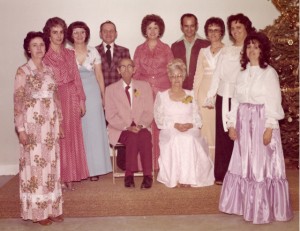 to take the rooster. Mom had hoped and always told herself that “Queenie” the rooster, who should have been a hen, went on to live a wonderful and very long live at Aunt Dixie’s henhouse, but I think she always knew, deep down, that “Queenie” actually made a great chick and noodle dish at the Richards’ table later that year. It was something the sisters never talked about, but both knew about. It was always an unspoken understanding between the sisters. Today is Aunt Dixie’s birthday. Happy birthday Aunt Dixie!! Have a great day!! We love you!!
to take the rooster. Mom had hoped and always told herself that “Queenie” the rooster, who should have been a hen, went on to live a wonderful and very long live at Aunt Dixie’s henhouse, but I think she always knew, deep down, that “Queenie” actually made a great chick and noodle dish at the Richards’ table later that year. It was something the sisters never talked about, but both knew about. It was always an unspoken understanding between the sisters. Today is Aunt Dixie’s birthday. Happy birthday Aunt Dixie!! Have a great day!! We love you!!

 My grand-nephew, Keifer Balcerzak loves his family. No matter what else he is or what else he does, Keifer wants to do what is best for his girls, and the baby that is on the way. Life is going great for them. Keifer has been helping his daughter, Reece learn to play t-ball this year. With practice, I think she could grow up to become as good at softball as her daddy. Time will tell if she decided to play softball or any other sport when she sets older, but no matter what she chooses, I know her parents will be supportive, and her daddy and mommy will help her be the best at it.
My grand-nephew, Keifer Balcerzak loves his family. No matter what else he is or what else he does, Keifer wants to do what is best for his girls, and the baby that is on the way. Life is going great for them. Keifer has been helping his daughter, Reece learn to play t-ball this year. With practice, I think she could grow up to become as good at softball as her daddy. Time will tell if she decided to play softball or any other sport when she sets older, but no matter what she chooses, I know her parents will be supportive, and her daddy and mommy will help her be the best at it.
Keifer has loved his wife, Katie for years and years. They have been married for six years, and they are so happy. They are a perfect couple, and Katie is Keifer’s soulmate for life. They are such a great team, both going in the same direction with the same ideas. They are so sweet together, it makes me smile. Not everyone finds their soulmate so early in life, but in the rare occasions when it happens, it is very obvious, and very sweet. Now, as their family is growing, they have even more to celebrate.
Keifer has been working out and getting in shape these days. He loves sports, especially softball, and this year has been a great year for his team. In order to be a good athlete, you have to be in shape. Keifer has been working hard to be in good shape for his team, and it has paid of. Not only is he in great shape, but the rest of 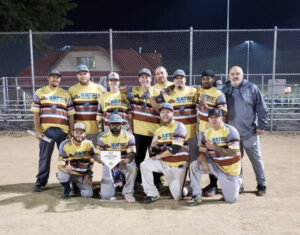 his team has worked hard too, and they have reaped the benefits of their hard work. This year, Keifer’s team was had the great pleasure of being the top team, the Men’s D3 Champs!! That takes a lot of hard work, a lot of skill…and a lot of practice. When everyone is willing to put the effort in, the team does well, and has a good chance of winning.
his team has worked hard too, and they have reaped the benefits of their hard work. This year, Keifer’s team was had the great pleasure of being the top team, the Men’s D3 Champs!! That takes a lot of hard work, a lot of skill…and a lot of practice. When everyone is willing to put the effort in, the team does well, and has a good chance of winning.
Keifer has had a great year in many ways, and the future looks exceptionally bright. He has a job he loves as a computer tech, and a great family. We are all so happy for him. Today is Keifer’s birthday. Happy birthday Keifer!! Have a great day!! We love you!!

 If you visit the Colosseum in Rome these days, you will see a rough-looking shadow of its former glory. The Colosseum was built between 70 AD and 80 AD, under Emperors Vespasian, Titus, and Domitian, the Flavian Emperors. The original name of the Colosseum was the Amphitheatrum Flavium, or the Flavian Amphitheater. Viewed as a populist undertaking by Vespasian, the Colosseum was, at least in part, commissioned as a means to regain the favor of the people, who were restless and unhappy with the imperial institution after Nero’s reign. Planning began in 70 AD and construction in 72 AD. The site of the artificial lake that Nero had constructed as part of the Domus Aurea was chosen for the Colosseum.
If you visit the Colosseum in Rome these days, you will see a rough-looking shadow of its former glory. The Colosseum was built between 70 AD and 80 AD, under Emperors Vespasian, Titus, and Domitian, the Flavian Emperors. The original name of the Colosseum was the Amphitheatrum Flavium, or the Flavian Amphitheater. Viewed as a populist undertaking by Vespasian, the Colosseum was, at least in part, commissioned as a means to regain the favor of the people, who were restless and unhappy with the imperial institution after Nero’s reign. Planning began in 70 AD and construction in 72 AD. The site of the artificial lake that Nero had constructed as part of the Domus Aurea was chosen for the Colosseum.
Most of the labor for the construction of the building was provided by Jewish slaves, who had been taken as prisoners following the first Jewish-Roman war. The Colosseum was constructed of several materials, mainly travertine, limestone, and marble for decorations. They used tuff, volcanic rock, brick, and lime for links. Metals, mainly bronze, were used to bind the stones together. Travertine is a sedimentary limestone, that is found where rivers, springs, lakes used to exist. Beige in color, travertine typically forms in hot springs. The area around Rome is rich with travertine. It forms by the precipitation of calcium carbonate. The travertine that was used to build the Colosseum came from the town of Bagni di Tivoli, formerly Tibur. Travertine is the majority of the stone in the Colosseum, and most of what is left.
The Colosseum’s decorations were in mostly made of marble, but if you go to the Colosseum today, you will not find much of that marble. It has all but disappeared, because it has been reused in the construction of other buildings in Rome. I find that fact to be very strange, since the Colosseum would have been seen as an important center in Rome…or maybe that is just what it is today. The entrances of the cavea and the balustrades were decorated with marble pieces as well. The first 3 rows of seating were also made of marble, a luxury reserved for the most affluent social class. The columns on the outside had marble capitals, and some columns were also in marble.
Of course, metal was needed too. They had to be able to attach the marble to the structure. In the Colosseum, bronze was the primary metal used, but they also used iron. The metal, was heated and stretched into a bar, then curved into a U shape. Adapted to holes intentionally dug into the stones of the facade, these structures served as agraphs to help keep the Colosseum upright. The first fires got the better of these agraphs which were gradually recovered to be melted. Nowadays only the holes in the stones remain, vestiges of this originality in the construction.
The Colosseum was originally clad entirely in marble. When you visit or see the Colosseum these days you’ll notice how the stone exterior appears to be covered in pockmarks all across its surface. Some say that it was not the reusing of the marble in other buildings that brought the Colosseum to it’s current pockmarked state, 
 but rather that after the fall of Rome, the city was looted and pillaged by the Goths. They took all of the marble from the Colosseum, and stripped it down to its bare stone setting. Whatever really happened, or even if it was a combination of the two, the Colosseum that stands today looks like a war-torn, broken-down shadow of what it used to be, and yet the fact that it still stands, continues to draw many people from all over the world to visit it every year.
but rather that after the fall of Rome, the city was looted and pillaged by the Goths. They took all of the marble from the Colosseum, and stripped it down to its bare stone setting. Whatever really happened, or even if it was a combination of the two, the Colosseum that stands today looks like a war-torn, broken-down shadow of what it used to be, and yet the fact that it still stands, continues to draw many people from all over the world to visit it every year.
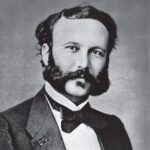
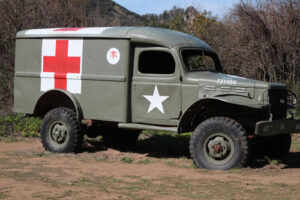 When it became necessary to improve the condition of the wounded soldiers during a war, 12 nations adopted The Geneva Convention of 1864 for the Amelioration of the Condition of the Wounded and Sick of Armies in the Field during a meeting in Geneva. Basically, the agreement, which had been advocated by Swiss humanitarian Jean-Henri Dunant, provided for the neutrality of medical personnel, so they could provide care to the sick and wounded in times of war, without considering the nation the soldier came from. It’s hard for me to think of refusing a soldier care because he fought for the enemy. He is still a human being, and still needs care. Nevertheless, there were times when the medics were not allowed to care for enemy troops.
When it became necessary to improve the condition of the wounded soldiers during a war, 12 nations adopted The Geneva Convention of 1864 for the Amelioration of the Condition of the Wounded and Sick of Armies in the Field during a meeting in Geneva. Basically, the agreement, which had been advocated by Swiss humanitarian Jean-Henri Dunant, provided for the neutrality of medical personnel, so they could provide care to the sick and wounded in times of war, without considering the nation the soldier came from. It’s hard for me to think of refusing a soldier care because he fought for the enemy. He is still a human being, and still needs care. Nevertheless, there were times when the medics were not allowed to care for enemy troops.
When the proposal was adopted, is was necessary to design an international emblem to mark medical personnel and supplies. In honor of Dunant’s nationality, a red cross on a white background…the Swiss flag in reverse…was chosen. Most of us have seen it, in person or on television. The MASH units had the symbol on the top of their tents. Military ambulances had it on the top of the unit. The organization became known as the International Committee of the Red Cross. Of course, we know it as the Red Cross. After a time many nations formed their own branches of the Red Cross.
Clara Barton founded the American chapter after hearing about the Red Cross in Geneva, Switzerland. In 1869. Barton went to Europe and became involved in the work of the International Red Cross during the Franco-Prussian War. After the war, she was determined to bring the organization to America. Barton became President of the American branch of the society, known as the American National Red Cross in May 1881 in Washington. Barton had connections in New York, so she opened the first chapters there. Money was donated by John D Rockefeller and four others to help create a national headquarters near the White House. Frederick Douglass, the abolitionist and a friend of Barton’s, offered advice and support as she sought to establish the American Chapter of Red Cross. As Register of Deeds for the District of Columbia, Douglass also signed the American Red 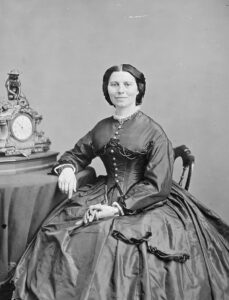
 Cross’ original Articles of Incorporation.
Cross’ original Articles of Incorporation.
Barton led one of the group’s first major relief efforts, a response to the 1881 Thumb Fire in Michigan’s Thumb region. Over 5,000 people were left homeless. The next major disaster was the Johnstown Flood on May 31, 1889. Over 2,209 people died and thousands more were injured in or near Johnstown, Pennsylvania, in one of the worst disasters in US history. The American National Red Cross, became an organization that was highly respected. Over the years they have done much to provide humanitarian aid to victims of wars and natural disasters in congruence with the International Red Cross. In 1901, Jean-Henri Dunant was awarded the first Nobel Peace Prize.
 On this day, August 21, 1911, an amateur painter decided to paint a painting near Leonardo da Vinci’s famed Mona Lisa, only to find out that someone had walked into the Louvre that morning, taken the priceless painting off the wall, hidden it under his clothing, and walked out of the museum. The first thought is, of course, who would be so brazen, but my second thought is how could he have pulled that off? How much clothing would it take to simply “tuck” a 20 inch by 30 inch painting into his clothing. Nevertheless, earlier that day, Vincenzo Perugia had walked into the Louvre, removed the famed painting from the wall, hid it beneath his clothes, and escaped.
On this day, August 21, 1911, an amateur painter decided to paint a painting near Leonardo da Vinci’s famed Mona Lisa, only to find out that someone had walked into the Louvre that morning, taken the priceless painting off the wall, hidden it under his clothing, and walked out of the museum. The first thought is, of course, who would be so brazen, but my second thought is how could he have pulled that off? How much clothing would it take to simply “tuck” a 20 inch by 30 inch painting into his clothing. Nevertheless, earlier that day, Vincenzo Perugia had walked into the Louvre, removed the famed painting from the wall, hid it beneath his clothes, and escaped.
The theft, somehow carried out in complete secrecy, left the entire nation of France is shock. There were many theories as to what could have happened to the priceless painting. Strangely, professional thieves were not on the list of suspects, because they would have realized that it would be too dangerous to try to sell the world’s most famous painting. I suppose that a private art collector might have hired a professional to steal it for a secret collection, but that didn’t seem to be the case. One theory, or  rumor really, in Paris was that the Germans had stolen it to humiliate the French. I’m not sure that made any sense before either of the world wars, but I guess tensions between the nations could have been on the rise then.
rumor really, in Paris was that the Germans had stolen it to humiliate the French. I’m not sure that made any sense before either of the world wars, but I guess tensions between the nations could have been on the rise then.
For two years, investigators and detectives searched for the painting without finding any real leads. Then in November 1913, the thief mad his first move…the one that would eventually bring his doom. Italian art dealer Alfredo Geri received a letter from a man calling himself Leonardo. It indicated that the Mona Lisa was in Florence and would be returned for a hefty ransom. Why he waited two years to ask for a ransom is beyond me, other than the fear of getting caught. The meet was set to pay the ransom, and when Perugia attempted to receive the ransom, he was captured. The painting was recovered, unharmed.
In a way, you could say that this was an inside job. Perugia knew his way around, and knew areas where the  Louvre might be vulnerable. Perugia, a former employee of the Louvre, claimed that he had acted out of a patriotic duty to avenge Italy on behalf of Napoleon. That claim was disproven when prior robbery convictions and Perugia’s diary, with a list of art collectors, caused most people to believe that he had acted solely out of greed. Perugia served seven months of a one-year sentence and later served in the Italian army during the First World War. The Mona Lisa is back in the Louvre, where improved security measures are now in place to protect it. I guess that one good thing came of the theft…better security. Of course, that might have come with technological advances anyway.
Louvre might be vulnerable. Perugia, a former employee of the Louvre, claimed that he had acted out of a patriotic duty to avenge Italy on behalf of Napoleon. That claim was disproven when prior robbery convictions and Perugia’s diary, with a list of art collectors, caused most people to believe that he had acted solely out of greed. Perugia served seven months of a one-year sentence and later served in the Italian army during the First World War. The Mona Lisa is back in the Louvre, where improved security measures are now in place to protect it. I guess that one good thing came of the theft…better security. Of course, that might have come with technological advances anyway.
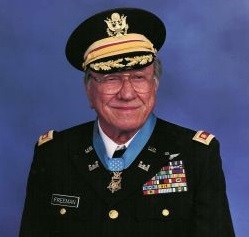
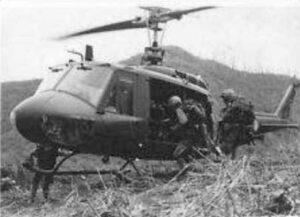 Ed Freeman first served in the military during World War II, in the United States Navy on the USS Cacapon (AO-52). While World War II was in no way uneventful or unimportant, it was not the most eventful part of Freeman’s service. Freeman decided to continue on in the military. Freeman had reached the rank of first sergeant by the time the Korean War began. By this time Freeman was in the Corps of Engineers, but his company fought as infantry soldiers in Korea. Freeman found himself fighting in the Battle of Pork Chop Hill, where he earned a battlefield commission as one of only 14 survivors out of 257 men who made it through the opening stages of the battle. His second lieutenant bars were pinned on by General James Van Fleet personally. He was given command of B Company and led them back up Pork Chop Hill.
Ed Freeman first served in the military during World War II, in the United States Navy on the USS Cacapon (AO-52). While World War II was in no way uneventful or unimportant, it was not the most eventful part of Freeman’s service. Freeman decided to continue on in the military. Freeman had reached the rank of first sergeant by the time the Korean War began. By this time Freeman was in the Corps of Engineers, but his company fought as infantry soldiers in Korea. Freeman found himself fighting in the Battle of Pork Chop Hill, where he earned a battlefield commission as one of only 14 survivors out of 257 men who made it through the opening stages of the battle. His second lieutenant bars were pinned on by General James Van Fleet personally. He was given command of B Company and led them back up Pork Chop Hill.
It was Freeman’s childhood dream to become a pilot, and his new commission made him eligible to become a pilot. Nevertheless, there was one drawback. When he applied for pilot training he was told that, at six feet four inches, he was “too tall” for pilot duty. That phrase stuck, and he became known as “Too Tall” for the rest of his career. It was a devastating setback, but in 1955, the height limit for pilots was raised and Freeman was finally accepted into flight school. He first flew fixed-wing army airplanes, but later switched to helicopters. When the Korean War ended, he flew the world on mapping missions.
By this time, Ed W. “Too Tall” Freeman had already had many success stories, but his real success story came during the Vietnam War, during the Battle of Ia Drang, specifically on November 14, 1965. During the battle, there were multiple men injured and the possibility of them dying was very real. Their unit was outnumbered 8-1 and the enemy fire on the men on the ground was so intense from 100 yards away, that the Commanding Officer ordered the MedEvac helicopters to stop coming in. That was basically a death sentence for the wounded men. The men were at LZ X-Ray, one of the most legendary war sites in Vietnam. It was here that the United States had its first major battle with the North Vietnamese People’s Army of Vietnam, the first very violent round of a bout that would last ten more years. There was really no way for the MedEvac helicopters to save them. Enter, Captain Ed Freeman, who was not a MedEvac pilot, by the way. Nevertheless, that did not stop him. He could not leave a man behind, much less 29 men. That this was not his job, meant nothing to Freeman, who heard the radio call and decided he was going to fly his Huey down into the machine gun fire anyway. He had not been given orders not to go, because he was not a MedEvac pilot, so he went. Those men soon knew that Captain Ed Freeman was coming in for them. Freeman dropped his Huey in and sat there in the machine gun fire, as they loaded 3 men at a time on board. Then, he flew up and out through the gunfire to get these men to the medical teams safety. And, he didn’t go in just once!! He kept going back…13 more times!! He went in until all the wounded were out. No one knew until the mission was over that the Captain had been hit 4 times in the legs and left arm.
Ed “Too Tall” Freeman was born on November 20, 1927 in Neely, Mississippi, the sixth of nine children. At the age of 13, he saw thousands of men on maneuvers pass by his home in Mississippi. He knew then that he wanted to become a soldier. Freeman grew up in nearby McLain, Mississippi, and graduated from Washington High School, however, at age 17, before graduating from high school, Freeman served in the United States Navy for two years. He then returned to his hometown and graduated from high school after the war. He joined the United States Army in September 1948, and married Barbara Morgan on April 30, 1955. They had two sons. Mike was born in 1956, and Doug was born in 1962.
Freeman’s commanding officer nominated him for the Medal of Honor for his actions at Ia Drang on November 14, 1965. Unfortunately, not in time to meet a two-year deadline in place at that time. He was instead awarded the Distinguished Flying Cross. The Medal of Honor nomination was disregarded until 1995, when the two-year 
 deadline was removed. He was finally and formally presented with the medal on July 16, 2001, in the East Room of the White House by President George W. Bush. Freeman died on August 20, 2008, due to complications from Parkinson’s disease. He was buried with full military honors at the Idaho State Veterans Cemetery in Boise.
deadline was removed. He was finally and formally presented with the medal on July 16, 2001, in the East Room of the White House by President George W. Bush. Freeman died on August 20, 2008, due to complications from Parkinson’s disease. He was buried with full military honors at the Idaho State Veterans Cemetery in Boise.


 My grand-niece, Aleesia Spethman, loves being in the water. Whether it’s Water World, the lake, city pools, or the pool that has been in her yard all summer, spending time in the water with family and friends is the best way to spend the summer. Aleesia’s favorite pool at Water World is the Wave Pool. The wave pool allows people to surf the waves, even though they are not on the ocean. Even if you don’t surf, I guess you would get the feeling of swimming in the ocean anyway.
My grand-niece, Aleesia Spethman, loves being in the water. Whether it’s Water World, the lake, city pools, or the pool that has been in her yard all summer, spending time in the water with family and friends is the best way to spend the summer. Aleesia’s favorite pool at Water World is the Wave Pool. The wave pool allows people to surf the waves, even though they are not on the ocean. Even if you don’t surf, I guess you would get the feeling of swimming in the ocean anyway.
Aleesia and her mom, my niece, Jenny Spethman are best friends. She is Jenny and her husband, Steve Spethman’s youngest child, and their only daughter (here on Earth, anyway. Aleesia’s sister, Laila lives in Heaven). Jenny always wanted a girl, but after three boys, and Laila’s passing, wasn’t sure she would get one. Jenny loves all of her children, but the boys are into sports, and working now, so Jenny and Aleesia get to do the girl things like shopping. Aleesia likes to shop with her mom, but she also likes it when her dad goes to the mall with them, because she and her dad can play in the video arcade while her mom goes shopping. Aleesia loves her dad, and she really has him wrapped around her finger. She can get him to do just about anything 

 she wants him to, including dancing at her cousin’s wedding…in front of people, which Steve would rather not do. Nevertheless, for his girl…he will do it…just because she is his girl. Jenny has a three wheeled bicycle with a basket in the back, and Aleesia loves to be taken on rides in that bike, with her mom, or even her brothers.
she wants him to, including dancing at her cousin’s wedding…in front of people, which Steve would rather not do. Nevertheless, for his girl…he will do it…just because she is his girl. Jenny has a three wheeled bicycle with a basket in the back, and Aleesia loves to be taken on rides in that bike, with her mom, or even her brothers.
Being the only girl child in the family isn’t always easy. The boys protect Aleesia, but they also pick on her. Aleesia’s brother Xander has a girlfriend now, Alli Simpson. That has been a good thing for Aleesia, because now the girls can stick together, as I’m sure the boys pick on Alli too. Of course, Aleesia has a group of girlfriends that she has known since she was 1 year old. They are all best friends, and love to do the same things, so whenever she can, Aleesia “escapes” the boy world she lives in and hangs out with her girlfriends, in Aleesia’s world. Aleesia also has another best friend…her grandma, my sister, Cheryl Masterson. They love to hang out after Cheryl gets off work most nights. It’s 

 been a long standing tradition almost since Aleesia was born. I suppose that one day that tradition will end, but my sister sure is enjoying it now, and hoping it continues for quite a while before that day comes. Today is Aleesia’s 9th birthday. Happy birthday Aleesia!! Have a great day!! We love you!!
been a long standing tradition almost since Aleesia was born. I suppose that one day that tradition will end, but my sister sure is enjoying it now, and hoping it continues for quite a while before that day comes. Today is Aleesia’s 9th birthday. Happy birthday Aleesia!! Have a great day!! We love you!!
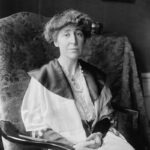 The 19th Amendment states that the right to vote “shall not be denied or abridged by the United States or by any State on account of sex.” In theory, this language guaranteed that all women in the United States could not be prevented from voting because of their gender. Of course, these days, no one really gives that a second thought, because…well, of course, women can vote. Who dared to think otherwise? Nevertheless, women were not always given the right to vote. In fact, for many years, men thought that politics was something that women could not possible begin to understand, and that it was a subject that was simply too harsh for the fragile female mind. Hahahaha!! We can laugh at such a thought now, because it is completely absurd, but that is what everyone thought back then…before the 19th Amendment was passed, following a fierce battle between the women suffragists and the men who ruled the nation.
The 19th Amendment states that the right to vote “shall not be denied or abridged by the United States or by any State on account of sex.” In theory, this language guaranteed that all women in the United States could not be prevented from voting because of their gender. Of course, these days, no one really gives that a second thought, because…well, of course, women can vote. Who dared to think otherwise? Nevertheless, women were not always given the right to vote. In fact, for many years, men thought that politics was something that women could not possible begin to understand, and that it was a subject that was simply too harsh for the fragile female mind. Hahahaha!! We can laugh at such a thought now, because it is completely absurd, but that is what everyone thought back then…before the 19th Amendment was passed, following a fierce battle between the women suffragists and the men who ruled the nation.
Nevertheless, in the midst of that fierce battle for the right to vote, an odd event took place in the form of the election of a US Congress member, Jeanette Rankin somehow being elected to Congress!! She was elected to 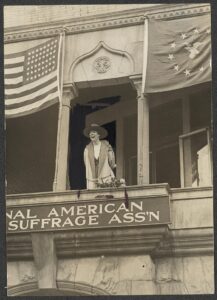 the US House of Representatives as a Republican from Montana in 1916, and again in 1940. Rankin was a woman, so how could this have possibly happened. She couldn’t even vote, and yet she won the election. That’s crazy. If her “fragile” mind could not be expected to understand how to vote for the office, how would she ever be able to function in the office. I mean, after all, she would be dealing with the same politics that her fellow members of congress had deemed her too fragile to understand. In fact, Jeanette Rankin would not be able to vote in an election until August 18, 1820. Her term in office ran from March 4, 1917 to March 3, 1919…during which time she was the only woman in the United States who could vote. Rankin would serve again from January 3, 1941 to January 3, 1943. Oddly, each of Rankin’s Congressional terms coincided with initiation of US military intervention in the two World Wars. A lifelong pacifist, she was one of 50 House members who opposed the declaration of war on Germany in 1917. In 1941, she was the only member of Congress to vote against the declaration of war on Japan following the attack on Pearl Harbor.
the US House of Representatives as a Republican from Montana in 1916, and again in 1940. Rankin was a woman, so how could this have possibly happened. She couldn’t even vote, and yet she won the election. That’s crazy. If her “fragile” mind could not be expected to understand how to vote for the office, how would she ever be able to function in the office. I mean, after all, she would be dealing with the same politics that her fellow members of congress had deemed her too fragile to understand. In fact, Jeanette Rankin would not be able to vote in an election until August 18, 1820. Her term in office ran from March 4, 1917 to March 3, 1919…during which time she was the only woman in the United States who could vote. Rankin would serve again from January 3, 1941 to January 3, 1943. Oddly, each of Rankin’s Congressional terms coincided with initiation of US military intervention in the two World Wars. A lifelong pacifist, she was one of 50 House members who opposed the declaration of war on Germany in 1917. In 1941, she was the only member of Congress to vote against the declaration of war on Japan following the attack on Pearl Harbor.
Jeanette Rankin was born on June 11, 1880, near Missoula in Montana Territory. Montana would not become a 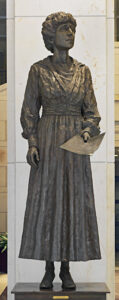 state for another nine years. Her parents were, schoolteacher Olive (née Pickering) and Scottish-Canadian immigrant John Rankin, a wealthy mill owner. She was the eldest of seven children, including five sisters (one of whom died in childhood), and a brother, Wellington, who became Montana’s attorney general, and later a Montana Supreme Court justice. One of her sisters, Edna Rankin McKinnon, became the first Montana-born woman to pass the bar exam in Montana and was an early social activist for access to birth control. With all that, it’s little wonder that she became a congresswoman. Apparently, politics ran in the family, and was likely an often-debated subject in the family home.
state for another nine years. Her parents were, schoolteacher Olive (née Pickering) and Scottish-Canadian immigrant John Rankin, a wealthy mill owner. She was the eldest of seven children, including five sisters (one of whom died in childhood), and a brother, Wellington, who became Montana’s attorney general, and later a Montana Supreme Court justice. One of her sisters, Edna Rankin McKinnon, became the first Montana-born woman to pass the bar exam in Montana and was an early social activist for access to birth control. With all that, it’s little wonder that she became a congresswoman. Apparently, politics ran in the family, and was likely an often-debated subject in the family home.
While Rankin was in her first term in office, it would seem to me that she must have felt a very strong sense of responsibility, because she was at that time the voice of all women…at least as it applied to government and politics. I can’t say that I would have agreed with all of her votes in office, especially where it applied to the two world wars, which I feel the United States needed to be involved in. Perhaps it is that aspect of being in office that the men didn’t think women were very well equipped to handle…war being such an emotional issue and all. I still think that there are many women who might struggle with the idea of sending our men into war, but then there are men who feel the same way, so I guess it is just a matter of where people stand concerning war. To date, Rankin remains the only woman ever elected to Congress from Montana.
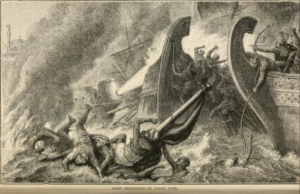 We seldom, if ever, think of a flamethrower as a weapon of warfare, but in the year 672, it was very much the weapon of choice for naval warfare by the the Eastern Roman Empire (Byzantines). The weapon called Greek Fire was used in ship-mounted flamethrowers. This weapon was so unique and deadly due to the fact that throwing water onto the solution would only feed the fire. That really left nothing to do but abandon ship and try to swim as far away as you could and as fast as you could. Imagine the shock as the first victim of this weapon tried to throw water on the flames, only to have them explode in their faces. These days, Firefighters understand that some chemical fires require a different form of attack than other chemical fires. It the case of something like the Greek Fire, used by the Eastern Roman Empire, modern firefighters would use a foam solution or a dry powder, usually found in a fire extinguisher. Unfortunately, those things were not available in 672.
We seldom, if ever, think of a flamethrower as a weapon of warfare, but in the year 672, it was very much the weapon of choice for naval warfare by the the Eastern Roman Empire (Byzantines). The weapon called Greek Fire was used in ship-mounted flamethrowers. This weapon was so unique and deadly due to the fact that throwing water onto the solution would only feed the fire. That really left nothing to do but abandon ship and try to swim as far away as you could and as fast as you could. Imagine the shock as the first victim of this weapon tried to throw water on the flames, only to have them explode in their faces. These days, Firefighters understand that some chemical fires require a different form of attack than other chemical fires. It the case of something like the Greek Fire, used by the Eastern Roman Empire, modern firefighters would use a foam solution or a dry powder, usually found in a fire extinguisher. Unfortunately, those things were not available in 672.
The Greek Fire was mostly used in naval warfare, because the required large flamethrowers to send its projectile across the water to the enemy ships. Ships could be better accommodated such a large piece of equipment. The infantry would be unable to carry such a weapon, although they probably wished they could, as it would effectively annihilate the enemy. The Greek Fire consisted of a combustible compound emitted by a flame-throwing weapon. It is believed that it could be ignited on contact with water, and was probably based on naphtha and quicklime. The Byzantines typically used the Greek Fire in naval battles with great results, as it could supposedly continue burning while floating on water. This technological advantage provided the Byzantines with military victories, including the salvation of Constantinople during the first and second Arab sieges. The Empire couldn’t have survived without it.
The impression made by Greek fire on the western European Crusaders was such that the name was applied to 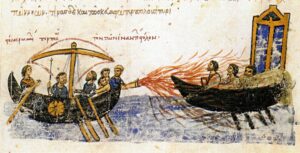 any sort of incendiary weapon, including those used by Arabs, the Chinese, and the Mongols, even though the formulas were different from that of Byzantine Greek Fire, which was a closely guarded state secret. The Byzantines also used pressurized nozzles to project the liquid onto the enemy, in a manner resembling a modern flamethrower. The usage of the term Greek fire has even been general in English and most other languages since the Crusades. The solution had a number of other names over the centuries. including sea fire, Roman fire, war fire, liquid fire, sticky fire, or manufactured fire, but none stuck quite like Greek Fire.
any sort of incendiary weapon, including those used by Arabs, the Chinese, and the Mongols, even though the formulas were different from that of Byzantine Greek Fire, which was a closely guarded state secret. The Byzantines also used pressurized nozzles to project the liquid onto the enemy, in a manner resembling a modern flamethrower. The usage of the term Greek fire has even been general in English and most other languages since the Crusades. The solution had a number of other names over the centuries. including sea fire, Roman fire, war fire, liquid fire, sticky fire, or manufactured fire, but none stuck quite like Greek Fire.
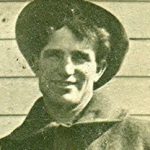

 My grandfather, Allen Luther Spencer, was a man who lived a hard life. Early in his first marriage, he and his wife, Edna Stanton Spencer, lost their daughter, Dorothy Spencer, who was my half-great aunt. She was just over 5 months old. It was a devastating loss for them, and the beginning of the end of their marriage. They were either pregnant then or got pregnant shortly after Dorothy’s passing, because my half-uncle, Norman Spencer was born just 9 months after Dorothy’s passing. Unfortunately, that was not enough to hold the marriage together, and the couple divorced a short time later. My grandfather married my grandmother, Anna Schumacher Spencer, and they had four wonderful children together, which is, of course, why I exist. My dad was Allen Lewis Spencer, one of those four children. I have always felt sad at what my grandfather went through in his life.
My grandfather, Allen Luther Spencer, was a man who lived a hard life. Early in his first marriage, he and his wife, Edna Stanton Spencer, lost their daughter, Dorothy Spencer, who was my half-great aunt. She was just over 5 months old. It was a devastating loss for them, and the beginning of the end of their marriage. They were either pregnant then or got pregnant shortly after Dorothy’s passing, because my half-uncle, Norman Spencer was born just 9 months after Dorothy’s passing. Unfortunately, that was not enough to hold the marriage together, and the couple divorced a short time later. My grandfather married my grandmother, Anna Schumacher Spencer, and they had four wonderful children together, which is, of course, why I exist. My dad was Allen Lewis Spencer, one of those four children. I have always felt sad at what my grandfather went through in his life.
Grandpa struggled with some things in his life, but his children loved him. He was a stern parent, but that was truly a part of the times. Many stern parents came out of that era, and while some of the children didn’t like it, they turned out to be great adults, and I suppose that they would have to say that in part their dad had something to do with that. Their mom, my grandma, was a much more gentle person, but make no mistake, she could be stern too if the situation warranted it. Grandma was a gentle person, but she was also a very strong person…physically and emotionally. She ran the family farm while grandpa was away working on the Great Northern Railway as a carpenter, and she did an excellent job.
I never really knew either of these grandparents, because my grandfather passed away October 19, 1951, about a year and a half before my parents were married, and 4½ years before I was born. My grandmother passed away 6 months after I was born. I will have to get to know them when I go to Heaven, but when I look at their pictures, I see people who lived during hard years in our nation’s history, and came through it successfully to raise the wonderful children I now call my dad, aunts and uncles. Sadly, they too have all gone to Heaven now. I can imagine the happy times they are all having up there…no more sadness, loss, or tears. 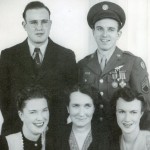
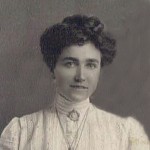
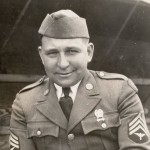 They can spend time together, getting to know their half-sister too, and there is no distance to cross. Today is the 142nd anniversary of my grandfather’s birth. How could it possibly be that many. Nevertheless, it is, and I know the party is on up there. Happy birthday in Heaven, Grandpa Spencer. We all love you very much, and can’t wait to meet you in Heaven one day.
They can spend time together, getting to know their half-sister too, and there is no distance to cross. Today is the 142nd anniversary of my grandfather’s birth. How could it possibly be that many. Nevertheless, it is, and I know the party is on up there. Happy birthday in Heaven, Grandpa Spencer. We all love you very much, and can’t wait to meet you in Heaven one day.

